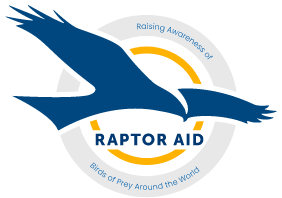Short-eared Owl Satellite Tagging Update.
Hello.
I’m Steve Downing, Chairman of the Northern England Raptor Forum [NERF]; I also lead the NERF Short-eared Owl [SEO] satellite tagging project.
I want to bring you up to date with how the project is going, but firstly I wish to thank Jimmi at Raptor Aid for organising the fundraising for the project and secondly, but more importantly I want to pass on heartfelt thanks to all of you who have been so generous with your financial support. Without your aid, it would not be possible to undertake this groundbreaking research into the English Short-eared Owl population.
Short-eared Owls are stunningly beautiful birds that can often be seen quartering the moors in search of food during the daytime. They are also quite confiding and can often be found searching the short grass margins of moorland roads or sitting on a fence post close by. I am fortunate enough to live on the Pennines and I see and work with SEOs most years. However, they are an enigmatic species. In some years they are plentiful across the NERF study area from the South Peak District across the whole length of the Pennine Chain to the Scottish border. Additionally, they are also found breeding in the NERF study areas in Cheshire, Greater Manchester and on the North York Moors. In other years we hardly find any at all. We know that their prey consists mainly of voles and small birds. We also know that voles live a boom-and-bust life cycle. In some years they are plentiful, often described as a vole plague, in others the population crashes and the presence of SEOs follows this pattern. This raises several interesting questions:
· If they are present in the uplands, are they site faithful, returning to the same piece of moorland that they have used previously?
· If they are not present in the uplands during the breeding season, where we would expect to find them, then where are they?
· Do they migrate vertically to breed in the English lowlands?
· Do they migrate horizontally to breed in Europe?
· If they do migrate to the continent which countries, do they go to?
· When they congregate in large numbers on the coast during winter, where do they come from?
· If the winter population is larger than the breeding population are the coastal birds’ European migrants escaping a harsh continental winter?
· If they are European migrants, which country do they originate from?
We know from studies by John Calladine in Scotland and by work done by our colleagues in the European Short-eared Owl Network that they are truly Pan-European species capable of travelling vast distances in search of prey and suitable breeding grounds when the need arises. Do the birds that breed and/or overwinter in England follow the same pattern? The data that we receive from the satellite tags will enable us to answer these questions about the Northern England birds and many more.
In addition to the satellite tagging project, we are fitting a colour ring to both adults, caught over winter, and the chicks that are ringed during the breeding season. This is the first English Short-eared Owl colour-ringing project.
Considering that the birds hunt during the daytime, and how confident they are, they are very popular with wildlife photographers. As we have seen with other species, the availability of high-quality long camera lenses and the increasing popularity of digi-scoping, using high-definition mobile phone cameras attached to a standard telescope, increases the number of re-sightings reported to the BTO. These re-sightings, from across the UK and central Europe, also add to our knowledge of dispersal, breeding site fidelity and longevity.
Whilst studying Short-eared Owls is fascinating and rewarding there is a darker side to their lives. I know from my former profession as a Police Wildlife Crime officer and an RSPB Investigations Officer that they are persecuted widely on upland game shooting estates in the North of England. Reliable information suggests that it is not just the occasional individual that is shot; on the contrary, it suggests that they are routinely killed annually and in large numbers. Working with the RSPB Investigations Team, who are highly skilled in using sophisticated electronic tracking devices, the satellite data will be of tremendous assistance when attempting to locate a dead bird. If the individual died naturally a post-mortem will provide us with valuable information as to the cause of death. If a fully functioning tag operating as normal goes off-line due to a ‘sudden stop, no function’ in suspicious circumstances the satellite data will aid the Police in their investigations and can be used in subsequent prosecution.
The paperwork has now been completed and the tags have been ordered. Once they are deployed and we have data to share I’ll bring you another project update. Once again on behalf of NERF thank you very much for your generous support enabling us to launch this project.
Of course, it is not just this project that requires financial assistance. Raptor Aid does brilliant work supporting raptors and Raptor Workers in numerous projects, large and small, and they all deserve our support. The task now is to drive this crowdfunding scheme forward to reach the £20,000 target so that more projects can be undertaken. If I can plagiarise the strap line from a well-known supermarket ‘Every Little Helps’ your kind contribution will have a hugely positive impact.
Kind regards.
Steve


